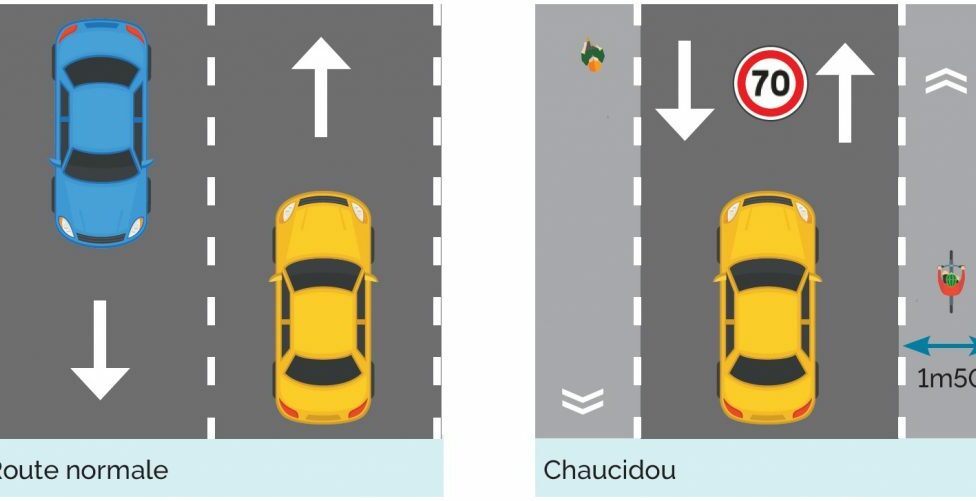Edge lanes can help cyclists and pedestrians stay safe and be seen when sharing the road

This kind of road consists of a central two-way traffic lane for motorists, bordered by two small edge lanes reserved for cyclists and pedestrians. The advantage for cyclists is that they have a dedicated lane to use, in both directions of traffic, without fear of being hit from behind by a vehicle. Indeed, the regulatory distance of 1m50 is largely respected when a car overtakes a bicycle in this configuration.
However, care should be taken when two cars cross each other, because things get a little more complicated. The cars have to move out into the edge lane to pass each other, taking care to check that there are no bicycles or pedestrians — who have right of way. As a result, it can potentially be a rather dangerous traffic route if users aren’t careful.
In theory, an edge lane set-up can be built on roads that are already being used by cyclists and pedestrians, with a width of at least 4.5 meters, and with a limited amount of vehicle traffic. It should be noted that speed limits should be quite low, in general around 40 mph.
Although the concept is still new or unheard of in many countries, it has been tried and tested for many years in the Netherlands and Denmark.














